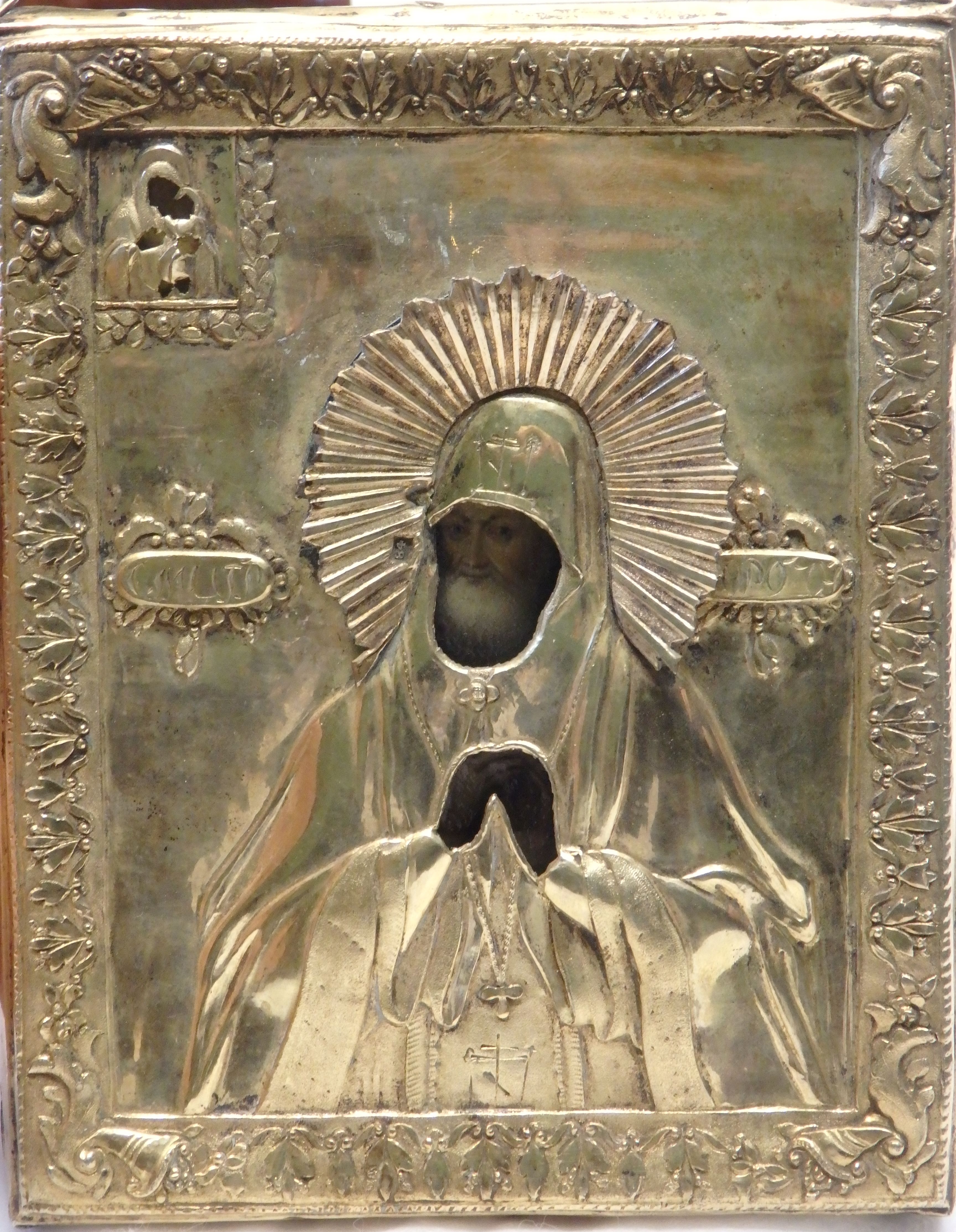Ikona św. Mitrofana z Woroneża w zbiorach Muzeum Tradycji Szlacheckiej w Waplewie
Słowa kluczowe:
Waplewo, ikona, św. Mitrofan z WoroneżaAbstrakt
In the collection of the Museum of the Noble Tradition in Waplewo, a branch of the National Museum in Gdańsk, there is an icon of St Mitrofan (Russ. Митрофан; Greek Μητροφάνης), Bishop of Voronezh (1632–1703), of Russian provenance, a quite exotic work in the artistic landscape of Gdansk Pomerania. Images of Saint Mitrofan of Voronezh spread in the first half of the 19th century, undoubtedly in connection with his canonization in 1832. His connection with this event is indicated by the date of the goldsmith’s stamp ‘1835’ under the hallmark ‘НޞД’ (Nikolai Lukič Dubrovin, d. 1862), a Moscow sampling master active in 1822–1855. The contractor was ‘A T’ (Afanasij Tikhonov), a Moscow goldsmith active in 1820–1839. It was marked in Moscow (stamp of St George piercing the dragon), silver test: ‘84’. Mitrofan belonged to a group of monks devoted to a harsh life in isolation, ‘holy elders’ whose lives and instructions were to strengthen the faith of laymen and clergy through asceticism, prayer, fasting, and penance. The icon of St Mitrofan preserved in Waplewo is one of the unique and very early testimonies to the newly canonized monk depicted without a nimbus in the icon. The clergy costume indicates the highest third level of the life of the monk, socalled the great schimnik, so in an extremely ascetic version, without any signs of episcopal dignity, in which even the cross hung on his neck was obscured by a gesture of his hands folded in prayer. From the information recorded on the back of the icon, corrected on the basis of the oral tradition, it follows that the icon had successively been in possession of the representatives (essentially women) of five generations of Polish families: Branicki, Potocki, and then Ogończyk-Sierakowski, the owners of the Waplewo residence from 1759 to 1933. However, the first owner of the icon seems to have been Aleksandra Wasiliewna Engelhardt (1754–1838), wife of Franciszek Ksawery Branicki (1730–1819), Hetman (Commander) of the Great Crown, and the alleged daughter of tsarina Catherine II, who probably gave it to her daughter Zofia.
Downloads
Bibliografia
Billington James H., Ikona i topór. Historia kultury rosyjskiej, przeł. Justyn Hunia, Kraków 2008.
Królczyk Agnieszka, Rosjanie i Rosja w relacjach Polaków podróżujących na Wschód (1705–1863), praca doktorska, Poznań 2015.
Kruk Mirosław Piotr, Ikony XIV–XVI wieku w zbiorach Muzeum Narodowego w Krakowie / Icons from the 14th–16th centuries in the National Museum in Krakow, t. 1, Katalog / Catalogue, Kraków 2019.
Kruk Mirosław Piotr, Święty Nikita poskramiający diabła [w:] Grzech. Obrazy grzechu w sztuce europejskiej od XV do początku XX wieku. Katalog [katalog wystawy], red. Beata Purc-Stępniak, Muzeum Narodowe w Gdańsku, Gdańsk 2016, s. 262–263.
Rzyska-Laube Dobromiła, Zbiory artystyczne polskich ziemian na Pomorzu Nadwiślańskim od końca XVIII wieku po czasy dzisiejsze, praca doktorska, Gdańsk 2019.
Долбилов Михаил, Русский край, чужая вера: Этноконфессиональная политика империи в Литве и Белоруссии при Александре II, Москва 2010 (Historia Rossica).
Зеленина Яна Э., Образ нового святого в русском искусстве синодального периода: иконография святителя Митрофана Воронежского, praca doktorska, Москва 2004, http://dslib.net/api/download/?id=1272179100&key=zSgFFIu0xLnlNkFU.
Постникова-Лосева Марина М., Платонова Нина Г. Ульянова Белла Л., Золотое и серебряное дело XV–XX вв. Территория СССР, Mосква 1995.
Святитель Митрофан, первый епископ Воронежский, всея Руси чудотворец [w:] Воронежские архипастыри от святителя Митрофана до наших дней: Историко -биографические очерки, сост. М.А. Прыткова, Bоронеж 2003, s. 15–84.


 Uniwersyteckie Czasopisma Naukowe
Uniwersyteckie Czasopisma Naukowe



